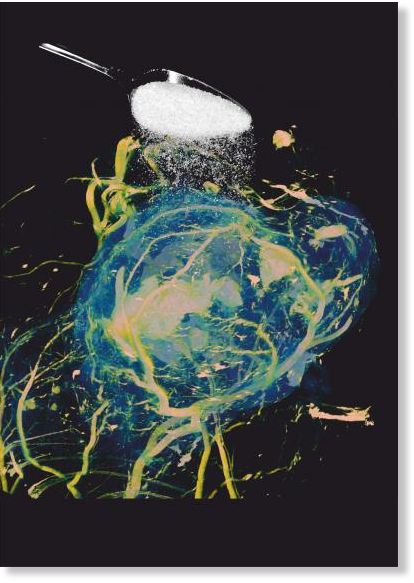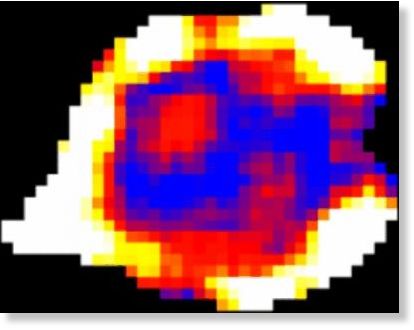
The new technique, called 'glucose chemical exchange saturation transfer' (glucoCEST), is based on the fact that tumours consume much more glucose (a type of sugar) than normal, healthy tissues in order to sustain their growth.
Comment: But notice how this important information isn't being utilized by many doctors to prevent or treat cancer. While, the fact is, that ketogenic - no sugar/ low carbohydrates/ high fat - diet is known to help with many diseases. Read the following articles to learn more:
Ketogenic diet, calorie restriction and hyperbaric treatment offer hope for non-toxic cancer treatment and alleviation of multiple health issues
Ketogenic diet: Role in epilepsy and beyond
Is the Ketogenic Diet the cure for multiple diseases?
Ketogenic diet may be key to cancer recovery
The researchers found that sensitising an MRI scanner to glucose uptake caused tumours to appear as bright images on MRI scans of mice.
Lead researcher Dr Simon Walker-Samuel, from the UCL Centre for Advanced Biomedical Imaging (CABI) said: "GlucoCEST uses radio waves to magnetically label glucose in the body. This can then be detected in tumours using conventional MRI techniques. The method uses an injection of normal sugar and could offer a cheap, safe alternative to existing methods for detecting tumours, which require the injection of radioactive material." Professor Mark Lythgoe, Director of CABI and a senior author on the study, said: "We can detect cancer using the same sugar content found in half a standard sized chocolate bar. Our research reveals a useful and cost-effective method for imaging cancers using MRI - a standard imaging technology available in many large hospitals."
He continued: "In the future, patients could potentially be scanned in local hospitals, rather than being referred to specialist medical centres." The study is published in the journal Nature Medicine and trials are now underway to detect glucose in human cancers.
According to UCL's Professor Xavier Golay, another senior author on the study: "Our cross-disciplinary research could allow vulnerable patient groups such as pregnant women and young children to be scanned more regularly, without the risks associated with a dose of radiation." Dr Walker-Samuel added: "We have developed a new state-of-the-art imaging technique to visualise and map the location of tumours that will hopefully enable us to assess the efficacy of novel cancer therapies."

Notes for editors:
1. Members of the media who would like more information, or to interview the researchers quoted, please contact David Weston UCL Media Relations Office on tel: +44 (0)20 3108 3844, out of hours: +44 (0)7917 271 364, email: d.weston@ucl.ac.uk
2. High resolution images are available from UCL Media Relations. Please credit UCL if used.
3. The paper "Imaging glucose uptake and metabolism in tumors" is published online ahead of print in Nature Medicine, July 7th 2013.
4. The UCL Centre for Advanced Biomedical Imaging is a new multidisciplinary research centre for experimental imaging. The Centre is built around a number of groups at UCL and brings together imaging technologies across UCL with specific applications in the biomedical sciences. Dr Simon Walker-Samuel and Professor Mark Lythgoe are affiliated to UCL Division of Medicine. Professor Xavier Golay is affiliated to the UCL Institute of Neurology.
About UCL (University College London)
Founded in 1826, UCL was the first English university established after Oxford and Cambridge, the first to admit students regardless of race, class, religion or gender and the first to provide systematic teaching of law, architecture and medicine.
We are among the world's top universities, as reflected by our performance in a range of international rankings and tables. According to the Thomson Scientific Citation Index, UCL is the second most highly cited European university and the 15th most highly cited in the world.
UCL has nearly 27,000 students from 150 countries and more than 9,000 employees, of whom one third are from outside the UK. The university is based in Bloomsbury in the heart of London, but also has two international campuses - UCL Australia and UCL Qatar. Our annual income is more than £800 million.
http://www.ucl.ac.uk | Follow us on Twitter @uclnews | Watch our YouTube channel YouTube.com/UCLTV



They've only done half of the thinking and talking here.